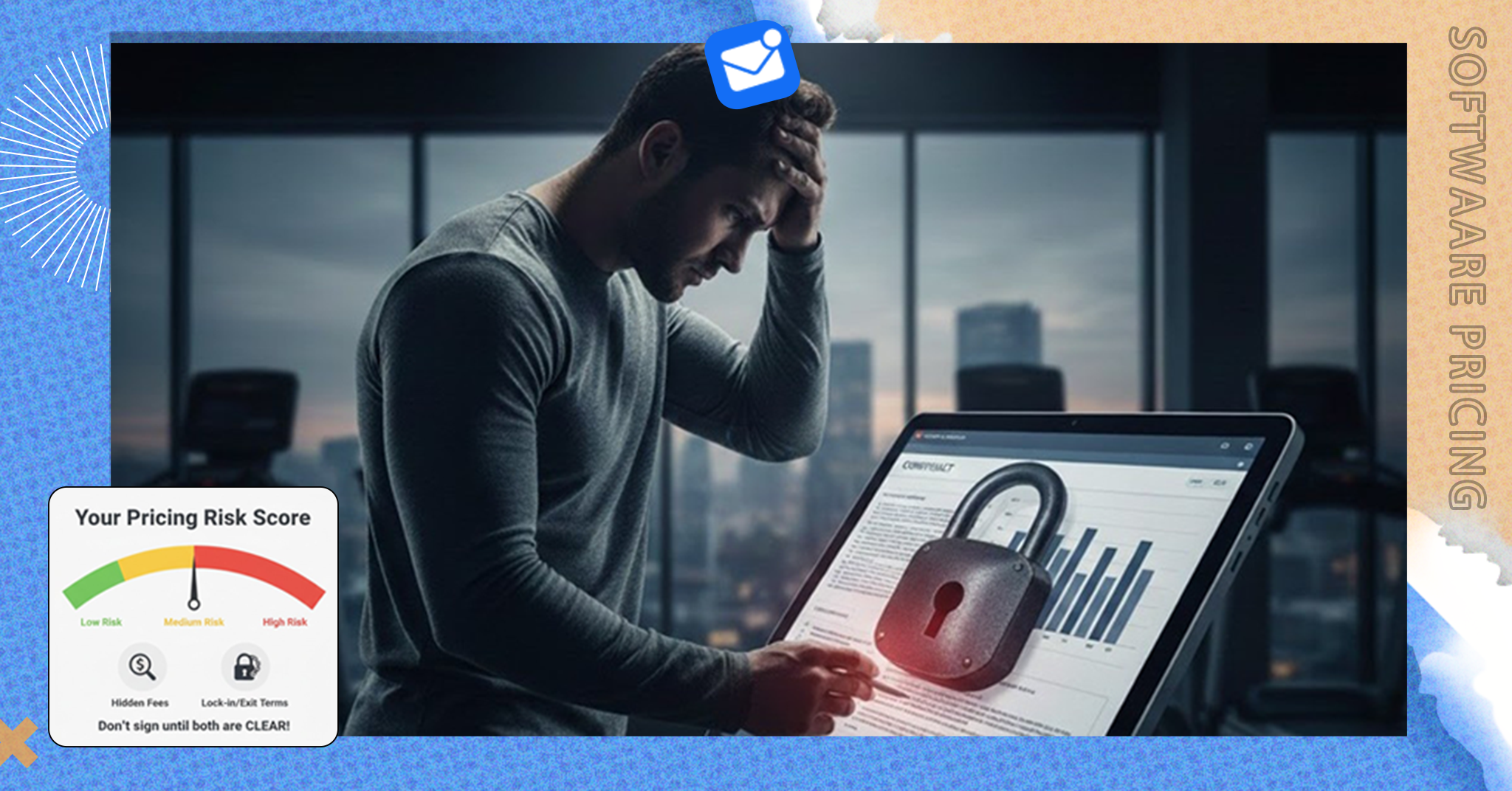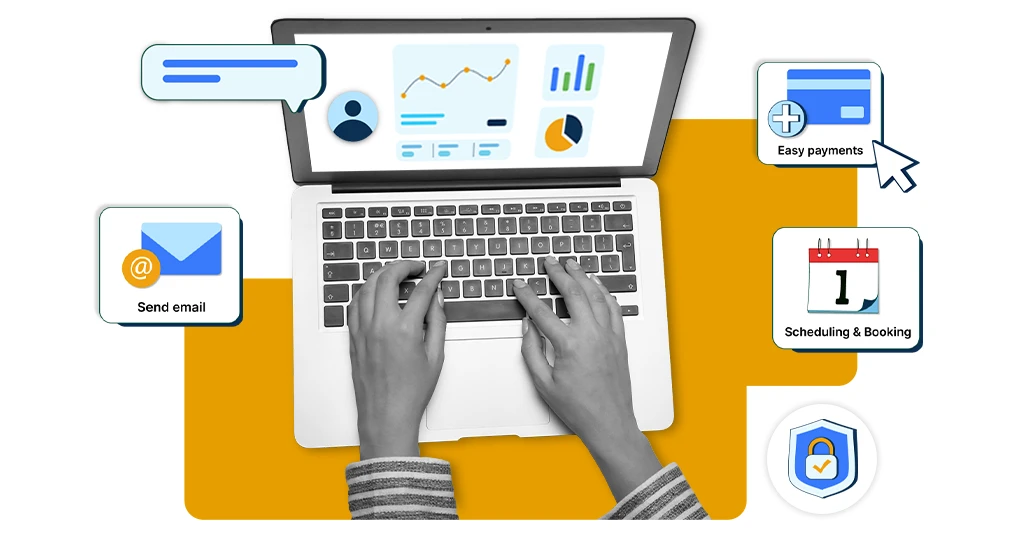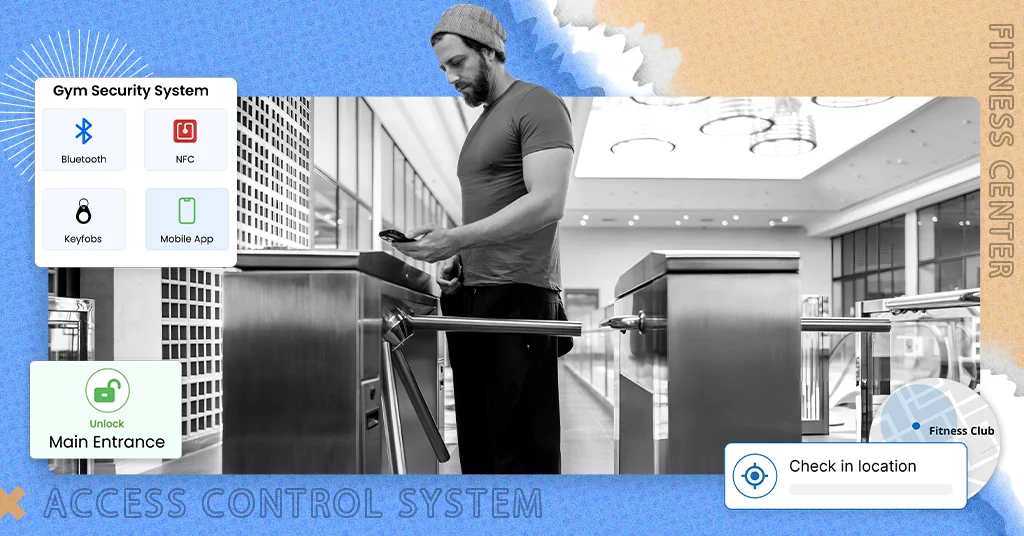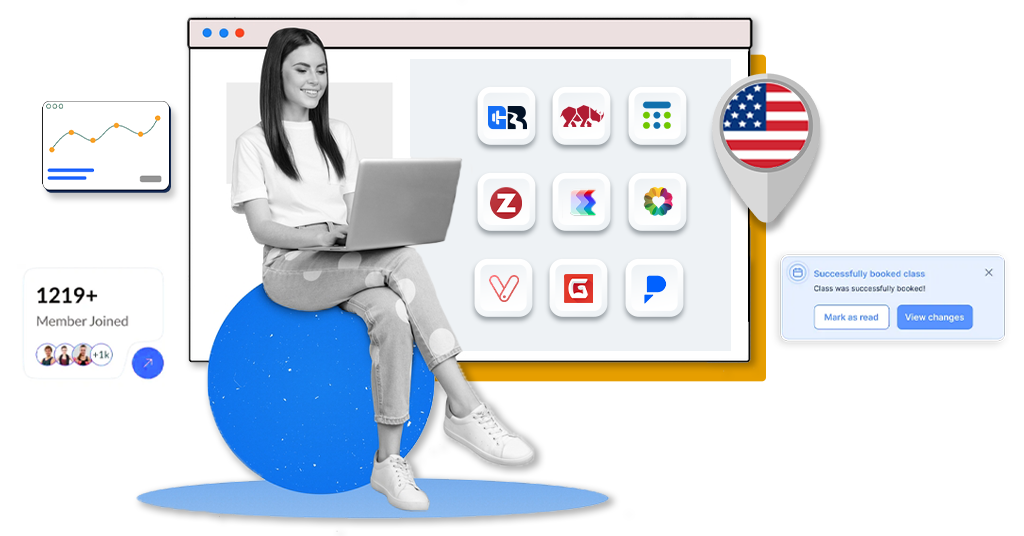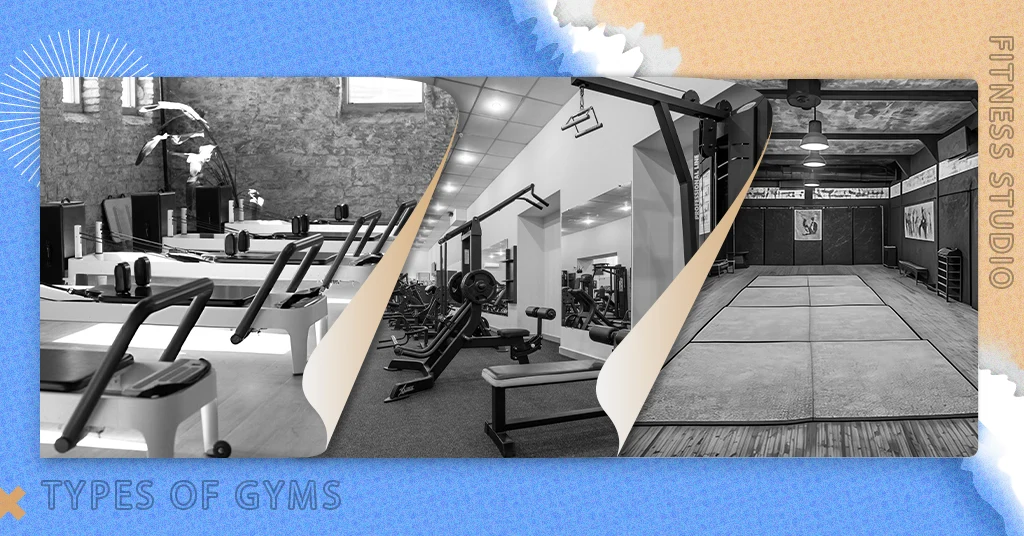What happens when anyone can walk into your gym?
You have got the weights. The machines. The music. But one thing is missing: control over who walks through your doors.
Here is the issue: Without a reliable gym access control system, anyone could sneak in. Members with expired plans might keep working out. Strangers could use your gym for free. And if you run a 24/7 setup? You are risking every single night.
A study showed that over 70% of gyms without automated access reported unauthorized entries at least once a month.
And it is not just a financial issue; it is about member trust.
Imagine your paying members noticing unfamiliar faces, overcrowding, or late-night intrusions. That undermines the safe, secure environment they expect from a professional gym.
It is not just about keeping out the wrong people. It is about giving your real members the freedom to work out on their own schedule, with safety and ease.
Let’s break down how a gym access control system solves all this and how to set one up.
What is a gym access control system?
A gym access control system is a smart way to manage entry into your gym. It uses technology to control who can enter your space, what time they are allowed in, and how they access it, without needing a person at the front desk all the time.
Think of it like a 24/7 doorkeeper who never sleeps, never misses a shift, and logs everything perfectly.
How it works:
- Each member gets a unique way to enter (card, app, PIN, key fob, or fingerprint).
- Every entry is tracked and stored in the system.
- The door opens only if their account is active.
It is simple, automatic, and secure.
Why smart access matters more than ever
Here is why more gyms are installing access systems today than ever before:
- Save time: No need for a receptionist to check people in.
- Protect your space: Only paying, active members get in.
- Improve member experience: Members love the freedom of 24/7 access without waiting in lines.
- Gather smart data: Track peak hours, inactive members, and visit frequency.
- Scale with ease: add more doors, locations, or member groups easily.
In addition, smart access builds your gym’s brand reputation. Tech-savvy clients notice when your facility is modern and convenient. A sleek access system tells them your gym is serious, secure, and forward-thinking.
Types of access control methods
Here are the most common ways gyms offer access:
| Method | Description | Pros |
| RFID Cards | Tap the card on the reader. | Quick, simple, durable. |
| Mobile App | Scan the phone via Bluetooth/NFC. | No card needed, modern feel. |
| PIN Code | Enter the code at the door. | Easy, no device needed. |
| Biometric | Fingerprint or facial scan. | Highly secure, no sharing. |
| QR Code | Scan the code sent to the phone. | Temporary access is possible. |
Some gyms even give members a choice at sign-up. Offering multiple methods shows that you are flexible and focused on convenience.
Each method can work solo or in combination. Many gyms now use mobile + card for the best mix of security and ease.
Must Read: The Ultimate Guide To Gym Key Fob Access Systems
Core parts of the gym access control system
Here is what you need to make it work:
- Power backup: So it still works during outages.
- Controller panel: Processes the access decision.
- Software platform: Manages members and rules.
- Access reader: Scans the card, app, or fingerprint.
- Smart lock: Unlocks the door only when access is granted.
- Internet or cloud connection: Keeps things updated in real-time.
Think of these parts as puzzle pieces; each one is essential, and they all need to fit together perfectly.
How to install a gym access control system
Let’s go step by step.
Step 1: Plan entry and exit points
Mark where people enter and exit. Don’t forget emergency exits or staff-only areas. You might also want to track traffic flow. Are members clustering at one door? Should staff have a separate entry? These decisions shape your system’s success.
Step 2: Choose entry methods
Pick the best type (card, app, PIN). Think about your members, what’s easiest for them?
Step 3: Install hardware
Mount readers, install locks, and connect them to a power source.
Step 4: Set up software
Create access rules:
- Who gets in and when?
- Trial vs. regular members.
- Time-based access (e.g., only during staffed hours).
Step 5: Test everything
Try it like a member would. Use all access types. Make sure it logs properly.
Step 6: Go live
Once you are confident, launch the system. Send members instructions to activate their access.
Don’t forget to run a soft launch with a few users first. It is the best way to catch surprises before your full rollout.
Safety tips every gym should follow
Installing access is only part of the puzzle. You need to follow best practices.
- Update member lists weekly.
- Always test during emergencies.
- Train your team to use the system.
- Regularly check logs for odd activity.
- Set different access for staff and members.
Also, consider installing motion-sensor cameras or emergency alert buttons in key locations. While access control prevents most issues, a multi-layered security approach keeps your gym truly protected.
What to avoid (common mistakes)
It is easy to rush the process. Don’t make these errors:
- Skipping backup power: Doors may fail during power loss.
- No integration with CRM: Leads to expired members accessing the gym.
- Ignoring visitor logs: Suspicious patterns may go unnoticed.
- Overcomplicating access: Too many steps frustrate members.
Remember, the best system is one that works without users even noticing it.
Keep it clean, simple, and tested.
| Pro tip: Set up alerts for unusual activity. If someone taps in 10 times in 5 minutes, or a member enters during non-permitted hours, the system can flag it. This boosts security without manual checks. |
You can also set tiered alerts, so front desk staff get pinged for minor flags, while security teams get notified for high-risk situations.
Add-on features worth exploring
Once you have a basic system running, you can add:
- Auto-locking schedules.
- Live alerts to your phone.
- Access reminders for expired members.
- Member messaging (e.g., “your trial ends tomorrow”).
- Payment-based access rules (e.g., pause access if unpaid).
Other advanced options include facial recognition, custom key fobs with branding, or integrated camera feeds at each access point. These are not essential, but they do offer polish and peace of mind.
Frequently asked questions
Do I need Wi-Fi for it to work?
Most systems need the internet, but many work offline temporarily and sync later.
Can I restrict group classes to certain members?
Yes, you can access zones, and you can set different rules for classrooms.
How do members get help if they can’t enter?
Set up a help button to a support number in your access app.
Make every entry count with GymRoute
You are not just installing a system. You are creating a better gym experience. Members get in. Non-members stay out. Everything runs smoothly. And when your gym grows? Your access system grows with you.
Control your gym. Protect your space. Free your team’s time.
Want to explore GymRoute’s easy, secure gym access control systems? Request a free demo right away to learn more.


